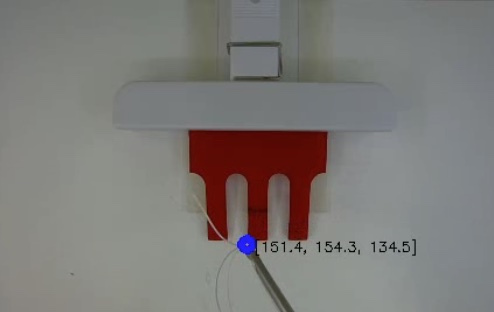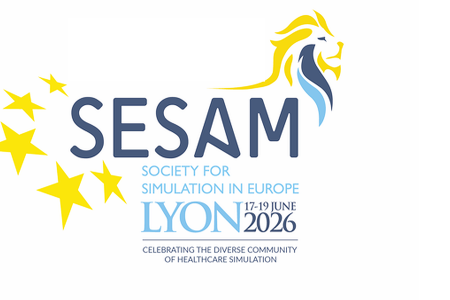Upcoming events
All eventsSimulation programs for surgical skills acquisition and assessment
Since last 25 years, numerous programs for surgical skills acquisition and assessment have been developed. This project is dedicated to list and describe the most accepted and validated.

Since last 25 years, the numerous simulation programs for acquisition and assessment of the surgical skills have been developed. This project is dedicated to list and describe the most accepted and validated out of them.
OSATS
In 1995, the Surgical Training Research Group at McGill University (Toronto, Canada) proved the feasibility of practicing practical skills in a simulation model and developed criteria for the objective assessment of a surgeon's practical skills. The examination was based on the format of the already well-known OSCE (Objective Structured Clinical Examination) and was named Objective Structured Assessment of Technical Skills or OSATS Rating Scale [Martin JA, 1997; Reznick R. 1997]. Individual surgical skills were simulated at eight "stations": excision of a skin neoplasm; placement of a T-shaped drainage of the choledochus; suturing of a laparotomy incision; manual inter-intestinal anastomosis; apparatus inter-intestinal anastomosis; stopping bleeding from the inferior vena cava; pyloroplasty; tracheostomy. The residents' demonstration of basic skills in general surgery was assessed at each "station" by 20-40 individual controls in a clearly structured table.
FLS
The need for a standardized objective system for assessing laparoscopic skills on a bench-model led to the development of the MISTELS (McGill Inanimate System for Training and Evaluation of Laparoscopic Skills) [Derossis AM, 1998], five exercises from which formed the basis of the Fundamentals of Laparoscopic Surgery ( FLS ) program. Evaluation of the FLS course is based on timing of the five exercises (prism repositioning, lap dissection, endopetal suture, extracorporeal and intracorporeal suture) based on the correctness of their execution. Each of them is given a time limit in seconds. The number of points is calculated as the difference between the time limit allotted for a given exercise and the actual performance in seconds. Errors (dropping a prism, deviating a cut from the marking, inaccurate stitching, etc.) are penalized and deducted from the final score. The FLS program content is a joint educational offering of SAGES and American College of Surgeons (ACS) and has been endorsed by the American Board of Surgery (ABS), the Canadian Association of General Surgeons (CAGS) and the American Board of Obstetrics and Gynecology (ABOG). More info at: flsprogram.org
FES
The Fundamentals of Endoscopic Surgery (FES) program includes two main elements: educational and evaluative [Vassiliou MC, 2009]. The educational component features a web-based instructional presentation that includes 13 interactive chapters. These chapters provide a comprehensive introduction to basic diagnostic and therapeutic endoscopy techniques, enriched with detailed text, images, and illustrations. The evaluation aspect of the program consists of a multiple-choice test and a hands-on skills assessment. This assessment tests both technical abilities and psychomotor skills using a virtual reality simulator. For the practical simulation training of the course tasks the VR simlators are used (haptic VR+hardware systems) developed by Surgical Science. Info: fesprogram.org
GOALS
A similar system of structured assessment has been developed for laparoscopic surgery. It was called the Global Operative Assessment of Laparoscopic Skills (GOALS), which is also based on a global rating scale. It evaluated the following resident performance characteristics: depth perception; bimanual coordination; tissue handling; efficiency; knowledge of the intervention, autonomy. In order to clearly understand the meaning of each rating, the examiner was given "hints" for each score, e.g., for depth perception, 1 point corresponded to "Frequent misses, sweeping movements, poor correction", 3 points corresponded to "Occasional inaccurate hits, with quick correction", and 5 points corresponded to "Precise movements of the instrument to the target, grasping the object on the first attempt". The first work on validation of the rating scale was performed for laparoscopic cholecystectomy [Vassiliou MC, 2005].
OSA-LS
In 2008, Danish gynecologists proposed a modification of OSATS for gynecologic laparoscopy - Objective Structured Assessment of Laparoscopic Salpingectomy (OSA-LS). The system consists of a table of structured assessment of manipulative skills divided into two groups: general and specialized. The first group includes such skills as economy of movement, accuracy of movement, time saving, tissue handling, and surgical progress. The second group of specialized skills includes proper exposure, use of diathermy, fallopian tube dissection, handling of the ovary, ovarian artery, the ovarian artery, pelvic wall, and tubal retrieval. Each skill is rated on a 5-point scale with an explanation of the scoring. The authors have demonstrated construct and discriminant validity of the OSA-LS scoring system. Thus, novice gynecologists (8 people) scored an average of 24.0 points, while the average score in the expert group was 39.5 [Larsen CR, 2008].
BESTA, Basic Endosurgical Simulation Training and Assessment [Gorshkov M, 2016]
LASTT, Laparoscopy Skills Testing and Training
SUTT, Suture Testing and Training [Molinas CR, 2008].
HYSTT, Hysteroscopy Skills Course
E-BLUS
